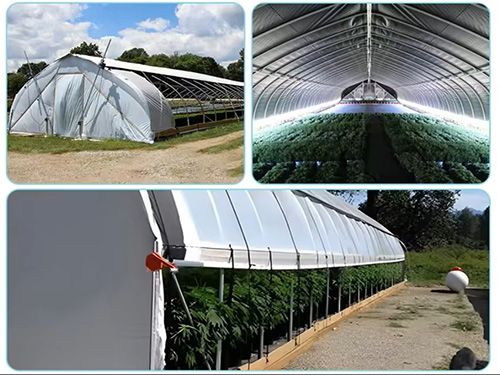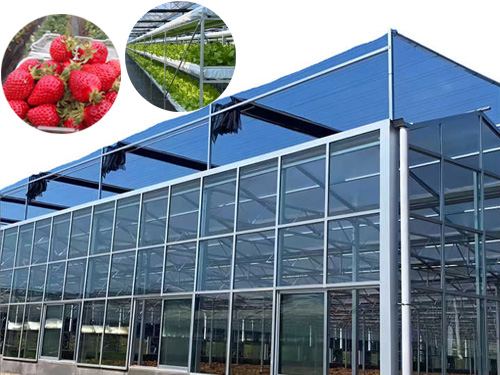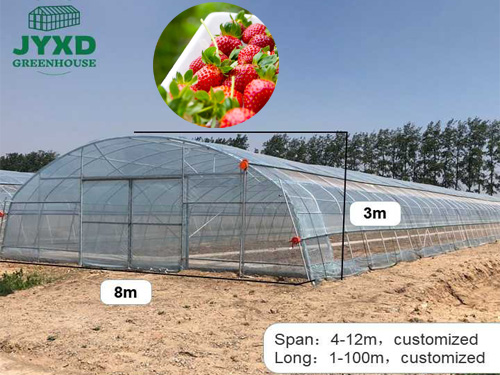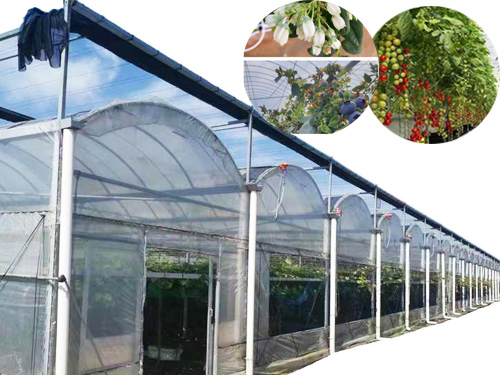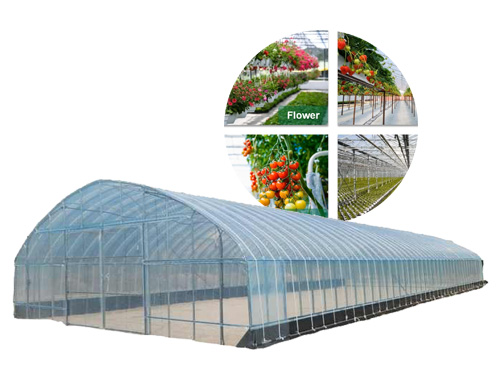NEWS DETAILS
NEWS INFORMATION
Medicinal Plant Cultivation in Greenhouses: Enhancing Active Compound Concentration
AUTHOR:jyxd-greenhouse DATE:2025-04-05 16:43:01 HITS:137
Medicinal plants are valued for their therapeutic properties, which are derived from bioactive compounds like alkaloids, flavonoids, and terpenes. Cultivating these plants in greenhouses offers a controlled environment that can significantly enhance the concentration of these active compounds. This article explores how greenhouse cultivation can optimize the growth of medicinal plants and maximize their bioactive content, ensuring high-quality yields for pharmaceutical, herbal, and cosmetic industries.
Why Greenhouse Cultivation for Medicinal Plants?
Medicinal plants require specific environmental conditions to thrive and produce high concentrations of active compounds. Greenhouses provide the ideal setting for achieving these conditions, offering:
· Precise Control: Manage temperature, humidity, light, and CO2 levels to optimize plant growth.
· Year-Round Production: Cultivate medicinal plants regardless of external weather conditions.
· Pest and Disease Management: Reduce the risk of infestations and contamination.
· Consistency: Ensure uniform quality and potency of bioactive compounds.
1. Factors Influencing Active Compound Concentration
The concentration of bioactive compounds in medicinal plants is influenced by several environmental and cultivation factors. Here’s how greenhouses can address these factors:
Light:
· Importance: Light intensity and spectrum affect photosynthesis and the production of secondary metabolites.
· Greenhouse Solution: Use LED grow lights with adjustable spectra to mimic natural sunlight and enhance compound synthesis.
Temperature:
· Importance: Optimal temperatures vary by plant species but are crucial for metabolic processes.
· Greenhouse Solution: Maintain consistent temperatures using heating and cooling systems.
Humidity:
· Importance: Proper humidity levels prevent stress and promote healthy growth.
· Greenhouse Solution: Use humidifiers and dehumidifiers to maintain ideal humidity levels.
CO2 Levels:
· Importance: Elevated CO2 levels can boost photosynthesis and secondary metabolite production.
· Greenhouse Solution: Implement CO2 enrichment systems to optimize levels.
Nutrient Management:
· Importance: Balanced nutrients are essential for plant health and bioactive compound synthesis.
· Greenhouse Solution: Use hydroponic or soil-based systems with precise nutrient delivery.
2. Strategies for Enhancing Active Compound Concentration
Greenhouse cultivation allows growers to implement targeted strategies to enhance the bioactive content of medicinal plants:
Stress Induction:
· Mild Stress: Controlled stress (e.g., slight water deficit or temperature fluctuations) can stimulate the production of secondary metabolites.
· Example: Echinacea plants produce higher concentrations of alkylamides under mild stress.
Light Manipulation:
· UV Light: Exposure to UV-B light can increase the production of flavonoids and phenolic compounds.
· Red and Blue Light: Adjusting the ratio of red to blue light can enhance specific bioactive compounds.
Nutrient Optimization:
· Micronutrients: Supplement with micronutrients like selenium or zinc to boost compound synthesis.
· Organic Fertilizers: Use organic fertilizers to promote natural growth and bioactive production.
Harvest Timing:
· Optimal Stage: Harvest plants at the peak of their bioactive compound concentration, often during specific growth stages or times of day.
· Example: Ginseng roots are harvested after 5-7 years for maximum ginsenoside content.
3. Case Studies: Success Stories in Greenhouse Cultivation
Turmeric in India:
· Challenge: Low curcumin content due to inconsistent growing conditions.
· Solution: Greenhouse cultivation with controlled light and nutrient management increased curcumin concentration by 30%.
Lavender in France:
· Challenge: Variable essential oil quality due to weather fluctuations.
· Solution: Greenhouse production with optimized humidity and CO2 levels ensured consistent high-quality lavender oil.
Ginseng in South Korea:
· Challenge: Long growth cycle and susceptibility to disease.
· Solution: Greenhouse cultivation with precise environmental control reduced growth time and increased ginsenoside content.
4. Benefits of Greenhouse Cultivation for Medicinal Plants
Implementing greenhouse cultivation for medicinal plants offers numerous advantages:
· Higher Potency: Enhanced concentration of bioactive compounds ensures more effective therapeutic properties.
· Consistent Quality: Uniform growing conditions produce consistent plant material.
· Year-Round Supply: Continuous production meets market demand regardless of season.
· Sustainability: Efficient resource use reduces environmental impact.
5. Best Practices for Greenhouse Medicinal Plant Cultivation
To maximize the benefits of greenhouse cultivation, follow these best practices:
· Choose the Right Species: Select medicinal plants that respond well to controlled environments.
· Monitor Environmental Parameters: Use sensors and automation to maintain optimal conditions.
· Implement Integrated Pest Management (IPM): Prevent pests and diseases without compromising plant health.
· Conduct Regular Testing: Analyze plant material for bioactive compound concentration to ensure quality.
· Stay Updated on Research: Incorporate the latest findings on light, stress, and nutrient effects on medicinal plants.
Conclusion
Greenhouse cultivation is a powerful tool for enhancing the concentration of bioactive compounds in medicinal plants. By controlling environmental factors and implementing targeted strategies, growers can produce high-quality, potent medicinal plants for pharmaceutical, herbal, and cosmetic applications. Whether you’re a small-scale grower or a commercial operation, greenhouse cultivation offers a sustainable and profitable solution for meeting the growing demand for medicinal plants.
For more expert tips and high-quality greenhouse solutions, visit our website and take your cultivation practices to the next level. Let’s grow smarter and cultivate a greener future together!
![]()
Meta Description: Learn how greenhouse cultivation enhances the concentration of bioactive compounds in medicinal plants. Discover strategies for optimizing growth and ensuring high-quality yields.
Hebei Juyou Xinda Greenhouse Facilities Co.,Ltd.
Copyright © 2024-2025 https://www.jyxd-greenhouse.com. All Rights Reserved Hebei Juyou Xinda Greenhouse Facilities Co.,Ltd.Copyright





 Current Location:
Current Location:


